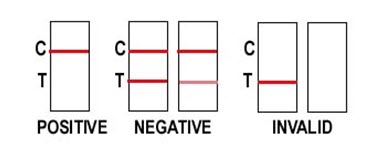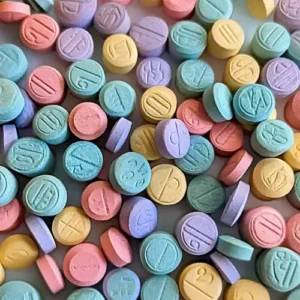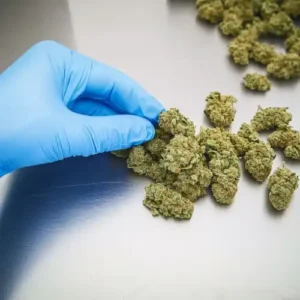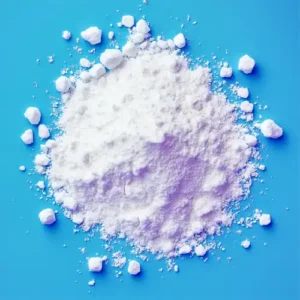Teenagers today have priorities, stresses, and pressures that differ vastly from when we were teenagers, and parents are right to worry that their child may become involved with drugs. There are a number of reasons why some teens turn to drugs, like socialising, fitting in, dealing with psychological or emotional pain, experiencing life transitions and so on, but the problem for many parents is that they really don’t know enough about drugs to protect their children.
In this article we’ll take a look at some of the more commonly used drugs to help you become better informed. You’ll notice on our site that we have a number of drug tests that are very efficient in testing for drug use. Our drug testing kits come with different testing strips so you get to choose which drugs to test for. Please note that we have only listed the most common drug tests, so if the drug you’d like to test for is not listed, please contact us and let us know which drug test you need.
Why Young People Turn to Drugs
Perhaps the most common question we get asked by parents is this: Why would my child want to take drugs? Most teens desperately want to be liked and to be included in peer groups. This desperation can be so strong that teenagers will engage in drug use just to fit in with a desired group. Sadly, to these teens, participating in drug use is preferable to being left out. Confused parents simply don’t understand why their teen would resort to taking drugs, and so they question themselves. They wonder if it’s because of them that their teen is using drugs, or perhaps their teen is having a problem at home or school they simply don’t know about.
Once a teenager tries drugs, it’s possible that they’ll continue because they enjoy the short-term effects, their friends are using drugs, and they believe it won’t hurt them. On the other hand, some teens simply enjoy breaking the rules without stopping to think about the consequences.
Another reason why young people turn to drugs is to cope with stress or emotional pain. Teens today face a lot of pressure – pressure to perform well in school, pressure to fit in, and pressure to succeed. Many teenagers lack the coping skills necessary to deal with this stress, and drugs can seem like a quick fix to their problems. They may turn to drugs to relieve anxiety, depression, or other emotional pain. This can quickly spiral out of control, as the drugs may temporarily relieve their pain, but they’ll eventually need more and more of it to get the same effect.
Furthermore, some teenagers are simply curious about drugs. They may have heard their friends or classmates talking about drugs, or they may have seen them in movies or TV shows. They may want to try drugs just to see what all the fuss is about. This curiosity can quickly turn into addiction, as the teen may become hooked on the way drugs make them feel.
In conclusion, there are many reasons why young people turn to drugs. From peer pressure to emotional pain to simple curiosity, teens face a lot of challenges when it comes to drug use. As parents, it’s important to understand these reasons and to be proactive in preventing drug use before it starts. This means having open and honest conversations with your teen about the dangers of drugs, monitoring their social activities, and being aware of any signs of drug use. By working together, we can help our teens stay healthy, safe, and drug-free.
What Type of Drug Is My Teenager Using?
A drug is a substance that alters the way you feel or think. Drugs including tobacco, alcohol, medical drugs, and caffeine, fall into one of the following groups –
- Stimulants: These drugs, also known as ‘uppers’, impact on the body’s central nervous system, making everything seem like it’s speeding up. The user’s level of alertness increases, causing the heart rate, breathing, blood pressure, and blood glucose levels to pump up. Examples of these types of drugs include ecstasy, crack, cocaine, speed, poppers, and tobacco.
- Analgesics: Also known as opioids or narcotic analgesics, these are drugs that have been designed specifically to relieve pain. These drugs can be very effective when used for pain control; however, they do carry a great risk of side effects. Heroin is an example of an analgesic drug.
- Hallucinogens: These are drugs that change the way the user perceives reality. It will be difficult for the user to think or communicate clearly, and they’ll likely hear, feel, and see things that don’t exist. Hallucinogens can also induce intense and rapid emotional mood swings. Examples of hallucinogens include magic mushrooms, LSD, and cannabis. Major risks of taking hallucinogens are that the user may experience paranoia, fear, anxiety, even psychosis.
- Depressants: These are psychoactive drugs that slow everything down, reducing the user’s alertness, and also slowing down the heart rate and breathing. Alcohol is possibly the best example of a depressant. Other depressants include aerosols, glues, and gases. When taken in small quantities a depressant can make the user feel quite relaxed; however, when taken in large quantities they can cause vomiting, unconsciousness, even death.
How Dangerous Is It for My Teen to Be Taking Drugs?
Taking drugs affects different people in different ways, but all drugs carry risks. The list below outlines the major risks for anyone taking illegal drugs –
- The first major risk is that the user will probably never know precisely what is in the drug they are taking. It’s highly unlikely that the drug they’ve purchased or been given will be pure, so the question is – what has it been mixed with?
- The second risk is that the user can never be sure how the drug might affect them, even if they have used that particular drug before.
- Users are at risk of catching dangerous, even life-threatening infections like hepatitis B and C, or HIV, if drugs are being injected and shared around.
- It can be highly dangerous to mix drugs, and this includes mixing drugs with alcohol.
- Female drug users often report experiencing heavier periods, while others say their periods have completely stopped.
How Long Do Drugs Stay in Your Body?
The amount of time that a drug can be detected in a user’s system depends on a number of factors, including the strength of the drug taken, the amount taken, its purity, whether the user is a casual or long term user, their body weight, and rate of metabolism. The following detection times are a guide only –
- Cannabis: up to 2 weeks in blood and 7-30 days in urine
- Alcohol: 10-12 hours in blood and 3-5 days in urine
- Barbiturates: 1-2 days in blood and 2-4 days in urine
- Amphetamines: around 12 hours in blood and 1-3 days in urine
- Cocaine: 1-2 days in blood and 3-4 days in urine
- Methamphetamines: 24-72 hours in blood and 3-6 days in urine
- Codeine: up to 12 hours in blood and 1 day in urine
- Methadone: 24-36 hours in blood and 3-4 days in urine
- Benzodiazepines: 2-3 days in blood and 3-6 weeks in urine
- LSD: up to 2-3 hours in blood and 1-3 days in urine
- Heroin: up to 12 hours in blood and 3-4 days in urine
- Morphine: 6-8 hours in blood and 2-3 days in urine
- Ecstasy (MDMA): 1-2 days in blood and 3-4 days in urine
Note: Drugs, or metabolites of drugs, may also be detectable in hair. It may be possible to detect drug use over a period of months depending on the length of hair.
When Should Drug Testing Kits Be Used?
Drug testing kits can be used at any time, so follow these simple directions to perform the test –
- It’s important that the seal of the foil pouch is not broken until you’re ready to begin the test. When you’re ready, remove the test strip from the foil pouch;
- The next step is to use a plastic cup to obtain a urine sample from the person who is been tested;
- You’ll notice that the testing strip has a Max Line. Dip the testing strip into the urine sample very carefully but do not go above the max line. The testing strip needs to be allowed to absorb the urine for approximately 10 to 15 seconds;
- After 15 seconds has passed, the testing strip should be removed from the urine. The testing strip should be placed on a flat, clean surface while the testing lines develop;
- Negative results can be read as soon as they appear; however, you should wait at least 5-minutes after removing the strip from the urine to read positive results. Allow no more than 10-minutes overall to read results, otherwise you may achieve a false reading.
How to Read the Results of Your Drug Testing Kit
Follow these simple steps to read the results of your test –
Just below the test handle of the testing strip you’ll notice that there is a pink/red coloured line. This is called the control line, known as C. The test line, known as T, is the next line that may (or may not) appear below the control line.

To confirm that the test strip is working properly you must be able to see the control line. If you can’t see the control line it means that the test strip has not worked, so you may choose to do a further test.
You should now be able to see a second pink/red coloured line underneath the control line, regardless how faint it may be. This indicates a negative result. However, if no other line appears below the control line, this means that the person being tested has just tested positive for that particular drug.
Now That I Have the Results, What Do I Do Next?
If the testing strip has revealed a negative result, it means that the person being tested has none of the specific drug being tested for in their body at that point in time. Perhaps wait for one month, then re-test again. If re-testing delivers a positive result, then you know that the drug being tested for has been detected in the individual’s urine. To confirm this positive result, we suggest you do another test at a later date.
It is important to remember that drug testing kits are not always 100% accurate and should be used as a guide rather than a definitive answer. If you are concerned about the results, it is recommended that you seek medical advice from a professional. It is also important to maintain confidentiality and privacy when conducting drug tests, especially in the workplace. Always ensure that you have the person’s consent before testing them and follow proper procedures to avoid any legal issues. With proper use and interpretation, drug testing kits can be an effective tool in promoting a drug-free environment and ensuring safety for all.
Photo by Isaac Jenks on Unsplash
Zoom Testing is a leading UK drug testing company and a supplier of Drug Test Kits.
This post was originally published in 2019. It was last updated in November 2024.





